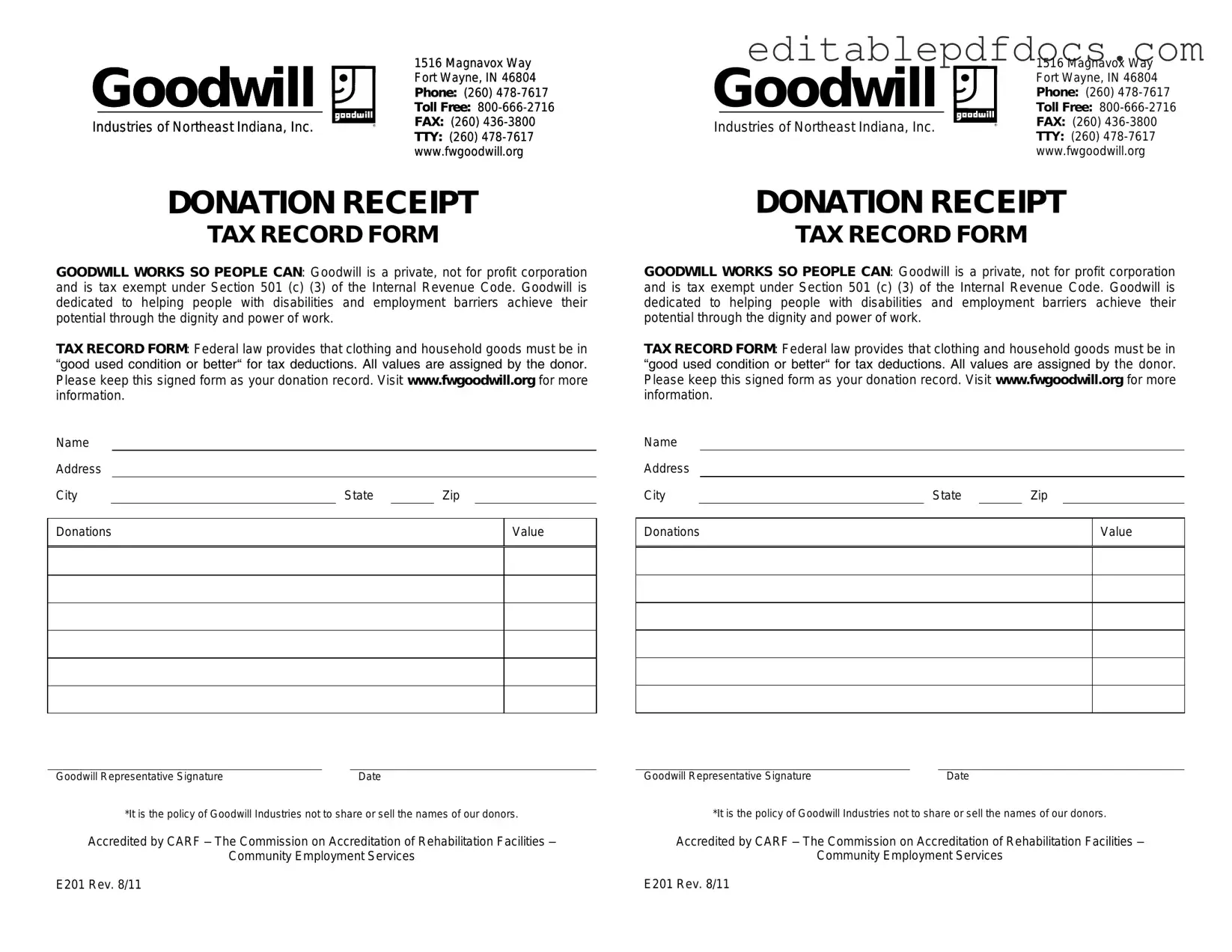When you donate items to Goodwill, you not only help those in need but also have the opportunity to claim a tax deduction. A crucial part of this process is the Goodwill donation receipt form, which serves as proof of your contribution. This form typically includes essential details such as the date of the donation, a description of the items donated, and their estimated value. It’s important to fill out this form accurately to ensure you have the necessary documentation for your tax records. Goodwill provides this receipt to donors at no cost, making it easy to keep track of your charitable contributions. Remember, the more precise your records, the smoother the tax filing process will be. Additionally, understanding how to properly use this receipt can maximize your potential deductions and support your financial planning efforts. As you prepare to donate, having this form ready can streamline your experience and ensure that you meet all necessary requirements.
